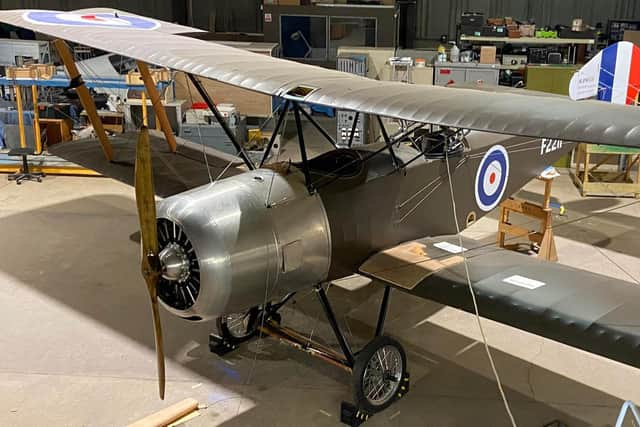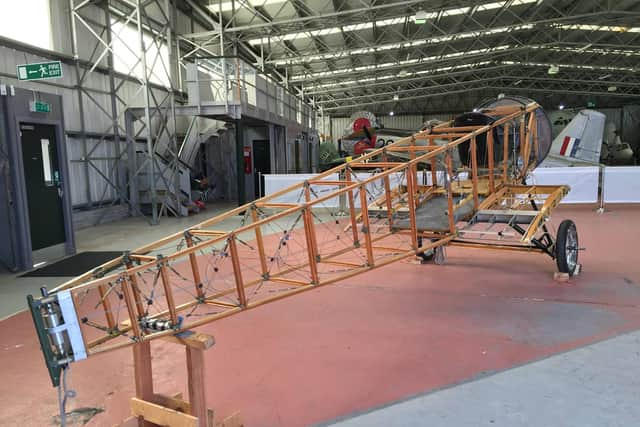Sopwith 1 1/2 Strutter: Lothians volunteers close to finishing working replica of First World War plane
and live on Freeview channel 276
The project to build a Sopwith 1 1/2 Strutter biplane from scratch, run by the Aviation Preservation Society of Scotland (APSS), has been carried out by a group of retirees in East Lothian.
After 22 years, the plane could be just a few months away from leaving the ground.
Advertisement
Hide AdAdvertisement
Hide AdWith volunteers turning up each Wednesday and Thursday to the base on a farm south of North Berwick, the plane has slowly been taking shape.


APSS chairman Mike Harper said a lot of passion had gone into building the plane.
He said: "We have about 60 members, but we have around 15 to 20 members that are regulars coming in and doing work.
"We’re absolutely delighted to see it come together, but there’s a feeling of caution, like anything to do with aviation.
Advertisement
Hide AdAdvertisement
Hide Ad“The anticipation of getting it in the air is fantastic. The guys are very supportive of each other.


"It’s been a long-term project, but it would have taken a lot less time if we were just building a replica to display, but we’re building something that will actually fly.
"A number of these guys were retirees that started the project 20 years ago and are no longer with us, so we’re going to fly it for them. There’ll be a plaque in the cockpit remembering everyone and all their hard work.”
The Sopwith 1 1/2 Strutter first came into service in 1915 and was instrumental in the war effort as a reconnaissance aircraft. It saw use in early aircraft carriers, the landing for which was pioneered in the Firth of Forth.
Advertisement
Hide AdAdvertisement
Hide AdMr Harper said: "Obviously we had the original Strutter plans and we knew exactly what we needed in order make it, but a lot of the parts just didn’t exist.
“It’s a wooden construction and it’s specifically slow-grown wood, pulled together by wire with metal brackets. It all had to be made because you just don’t go and buy it. So the guys had to re-learn certain skills to make this. There was just so much effort that went into it.
“We’ve come a long way in the last year. It’s hard to name a date, but I’d like to think that in the next two to three months we can get this aircraft in the air, providing we don’t hit any major snags."
As the plane nears completion, the APSS are already looking to the future.
Advertisement
Hide AdAdvertisement
Hide AdMr Harper said: “There’s another project waiting in the wings, so to speak.
"We’re going to build a Sopwith Pup, which was the next aircraft to come along after the Strutter.
“There’ll be people out there who don’t know anything about aircraft, but can offer other skills to help, like accounting, spreadsheets, promoting things, people who can go out and do talks and organise events.
"We’re seen as a men’s shed, but we’re not restricting us to that. “e’re open to anyone.
Advertisement
Hide AdAdvertisement
Hide Ad"We’re trying to engage with youngsters in STEM (science, technology, engineering, and mathematics) projects. Our focus isn’t just on a bunch of old guys building an aeroplane, it’s about inspiring young people and developing their skills and interests.”
Comment Guidelines
National World encourages reader discussion on our stories. User feedback, insights and back-and-forth exchanges add a rich layer of context to reporting. Please review our Community Guidelines before commenting.